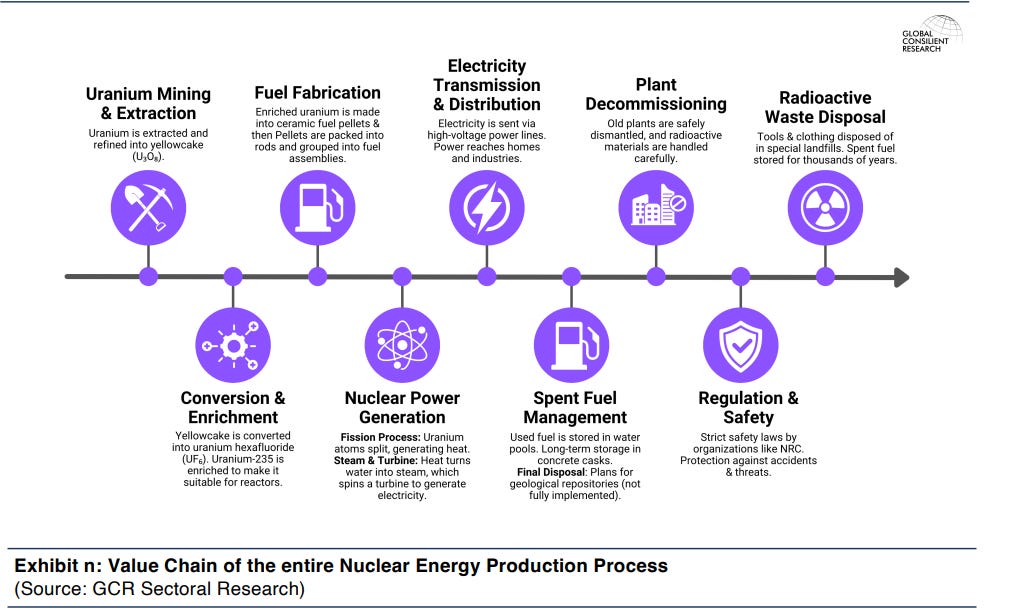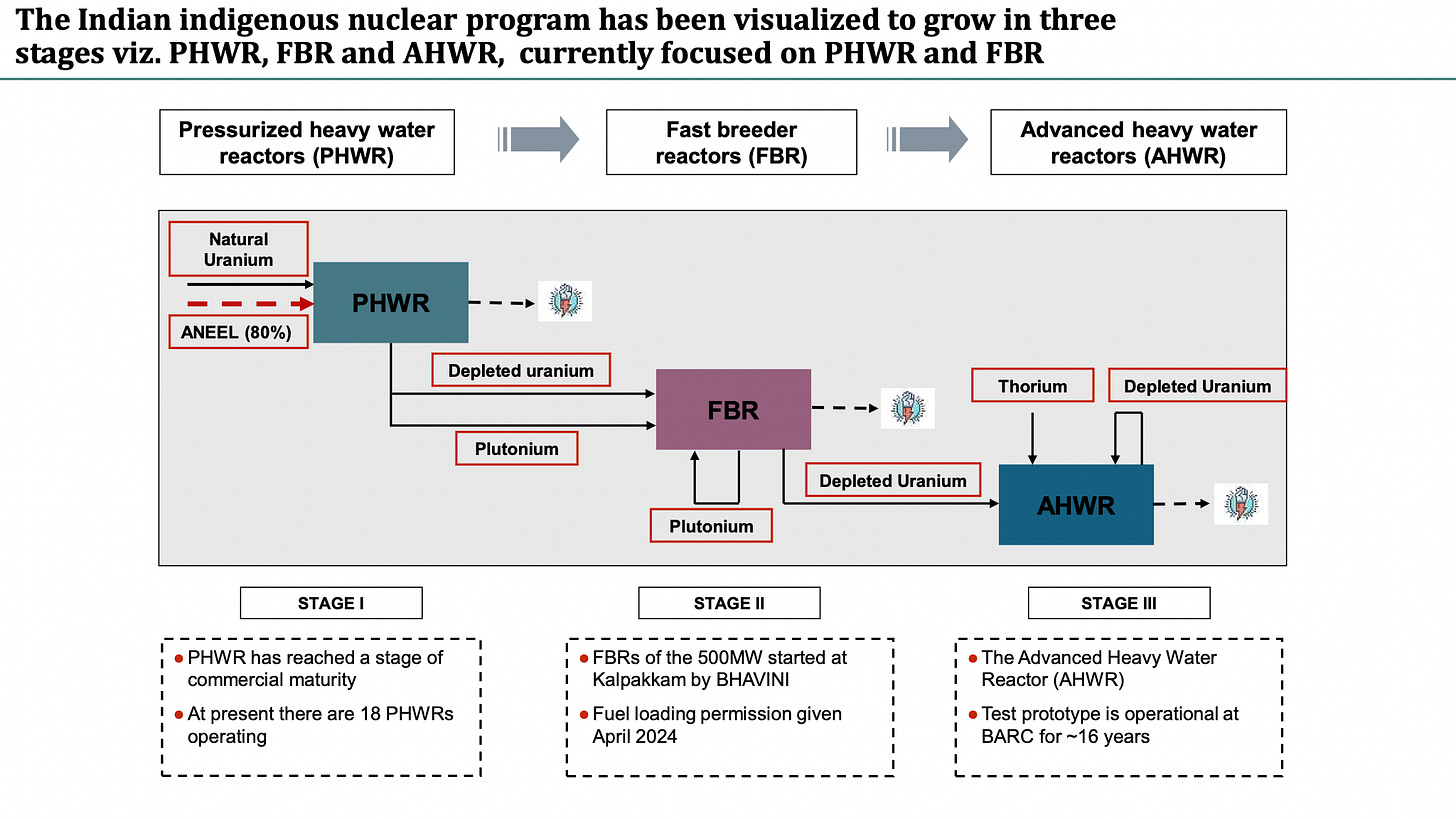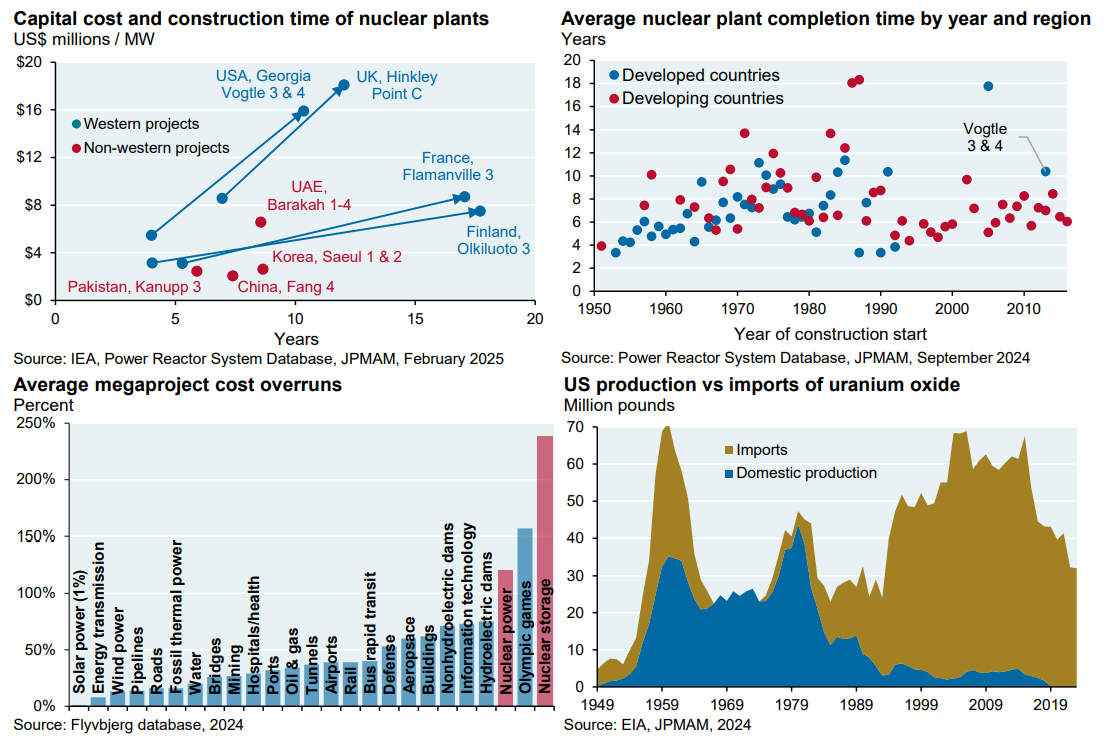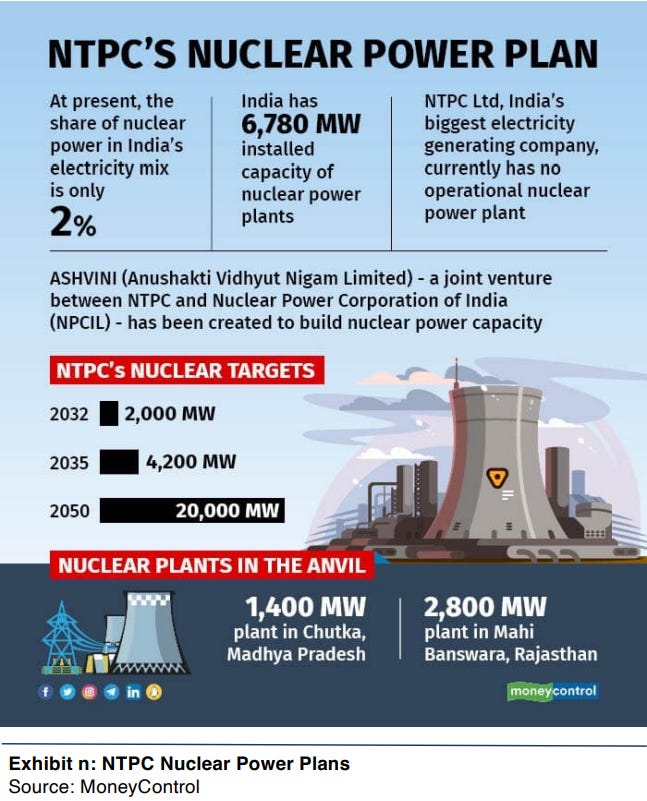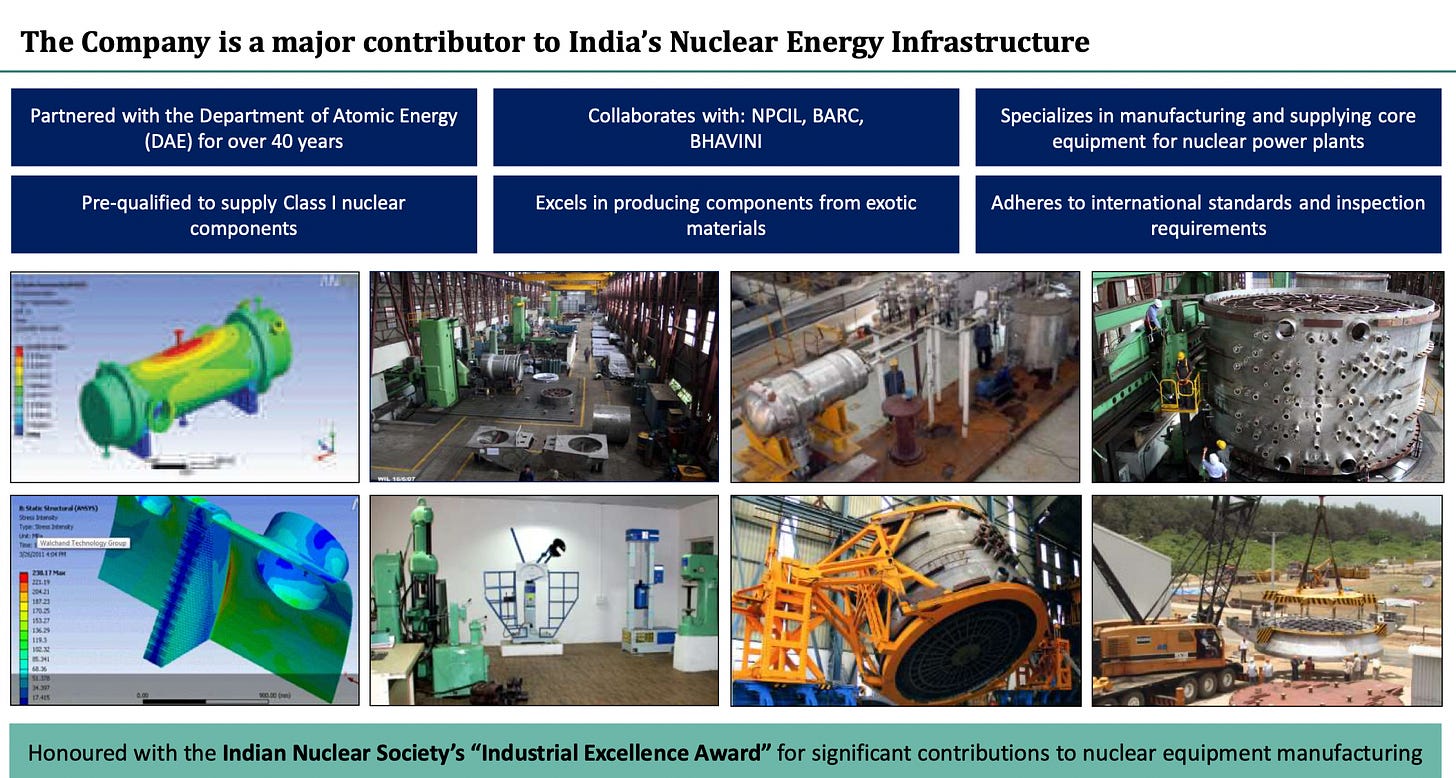This is the 10th post in the Energy Transition Series. The previous posts are collated here:
In the race to decarbonize and transition to a sustainable energy future, nuclear power is once again being touted as a key solution. From traditional large-scale reactors to the promise of Small Modular Reactors (SMRs), there's a growing buzz around a potential nuclear renaissance. What are SMRs?
SMRs (Small Modular Reactors) are a type of nuclear reactor - smaller in size and output compared to traditional nuclear power plants. They are designed to be factory-built, modular, and scalable, making them potentially more cost-effective and easier to deploy.
The SMRs are anticipated to bring forward the following advantages paving for clean nuclear energy
Smaller and Modular Design – In a range of 10-300 MW vis a vis conventional reactors which typically are in the GW range. With a modular design, they can be manufactured with ease reducing construction time and costs.
Enhanced Safety – SMRs may bring passive safety features e.g. cooling down without active intervention.
Flexibility – Can be used in remote locations, industrial applications, or even for hydrogen production and desalination.
Potential for Lower Costs – Mass production in factories could bring down costs compared to traditional nuclear power plants, which suffer from long construction timelines and budget overruns.
However, since this technology is still WIP the sailing is not smooth. There are challenges and concerns e.g. the existing nuclear regulations are designed for large plants, and adapting them for SMRs is time-consuming, Waste Management (larger nuclear plants benefit from economies of scale here) and the most critical challenge is the Public Perception i.e. concerns around safety and nuclear energy risks.
Nuclear Energy Supply Chain
Nuclear Energy in India
India has set a target of reaching 100 GW of nuclear power capacity by 2047, a sharp increase from its current 8.18 GW.
India plans to deploy 40–50 SMRs, reinforcing its commitment to a sustainable and scalable nuclear energy ecosystem
The Department of Atomic Energy (DAE), in collaboration with Tata Consulting
Engineers are reengineering Pressurized Heavy Water Reactors (PHWRs) for the Bharat Small Modular Reactor initiative
Bharat Small Reactors (BSRs)
The Bharat Small Reactors (BSRs) initiative combines the proven Pressurized Heavy Water Reactor (PHWR) technology with modern deployment efficiencies.
Designed as 220 MW reactors with an established safety record, BSRs are being optimized to reduce land requirements, making them ideal for integration with industrial sectors such as steel, aluminum, and heavy metals.
By serving as captive power plants, BSRs provide stable, low-carbon energy to high-emission industries, supporting India's net-zero transition while reducing reliance on coal-based power generation.
The public-private collaboration model—where private entities provide land, cooling water, and capital, while NPCIL oversees design, operations, and maintenance—ensures efficient capital deployment and regulatory compliance.
Small Modular Reactors (SMRs)
Beyond BSRs, India is actively developing Small Modular Reactors (SMRs),
Modular deployment, reducing construction costs and enabling factory-based manufacturing for faster scalability. Given India’s extensive experience in PHWR technology, it has a strong foundation to develop indigenous SMR designs, enhancing energy security while creating export potential in the global SMR market.
Advanced Nuclear Technologies
India’s nuclear expansion is not limited to traditional reactors—the Department of Atomic Energy (DAE) and the Bhabha Atomic Research Centre (BARC) are researching cutting-edge nuclear technologies like:
High-temperature gas-cooled Reactors (HTGRs) for hydrogen co-generation, supporting India’s emerging green hydrogen economy.
Molten Salt Reactors (MSRs) to utilize India’s abundant thorium reserves, reducing dependence on imported uranium.
The Pro-Nuclear Argument
✅ A single nuclear reactor can generate as much electricity as thousands of wind turbines or solar panels, requiring significantly less land and infrastructure
✅ Low-carbon source of electricity that can provide baseload power, unlike intermittent renewables
✅ Optimism around SMR - Proponents claim that these smaller, more flexible reactors could be cheaper to build, quicker to deploy, and boast enhanced safety features with passive shutdown and cooling mechanisms. Some even suggest they could reduce nuclear waste and use uranium more efficiently
This vision has fueled significant interest, with numerous companies developing next-gen nuclear designs and a considerable pipeline of SMR projects in the worksGround Reality
A closer look at the current nuclear landscape reveals a more complex picture, suggesting that the path to a nuclear-powered energy transition might be fraught with challenges and that the hype surrounding SMRs in particular needs a dose of realism. (Extrapolating the setbacks across the world to taper down the expectations)
❌ After dominating capacity additions in the mid-20th century, new projects collapsed due to various factors. Even the recent completions have suffered from significant cost overruns and lengthy construction times (especially in OECD region compared to developing economies)
❌ Skepticism from Industry Leaders: Even the CEO of NextEra, a major energy company, expressed strong skepticism about SMRs in 2022, viewing them as "an opportunity to lose money in smaller batches" due to high costs and technological bets
❌ Past Failures of "Next-Gen" Designs: History shows that not all innovative nuclear designs succeed. Molten salt and High-Temperature Gas-Cooled Reactors (HTGR) were attempted in the US in the past and abandoned due to poor performance.
❌ Poor Performance of Existing SMRs: Globally, there are very few operating SMRs, and their track record isn't exactly stellar. The only operational small modular HTGR in China experienced significant delays and operated well below capacity . Furthermore, existing SMRs in Russia and China, and one under construction in Argentina, have seen massive cost overruns (300%-700%) and significantly longer construction times than initially projected.
❌Uncertainty in Achieving Economies of Scale: For SMRs to become cost-competitive through modularization, a very high number of units might need to be produced. One study estimated that NuScale's VOYGR model would require over 1,100 units to achieve sufficient cost reduction. This raises questions about the feasibility of reaching such production levels in a timely manner.
❌Potentially High Costs: Despite the promise of lower costs, some Western SMR projects are estimated to potentially cost between $15 and $20 million per MW, which is far from the competitive levels needed.
❌Reliance on imported Uranium: Furthermore, the US, despite its nuclear capacity, relies on imported uranium and lacks sufficient domestic capacity for high assay low enriched uranium (HALEU), which is needed for some advanced reactor designs, causing delays in projects. India also relies on uranium imports and getting enough fuel might be a challenge.
Some Companies related to Nuclear (not exhaustive)
ASHVINI JV between NPCIL & NTPC
NTPC
Naveen Jindal Group
Plans to invest ₹1.80 lakh crore ($21.6 billion) to develop 18 GW of nuclear power
Adani Power
Has announced plans to develop 30 GW of nuclear power capacity
Hindustan Construction Company (HCC)
Have contributed to over 5,780 MW of the country’s existing nuclear power capacity, with ongoing projects including the Rajasthan Atomic Power Plant - Units 7 & 8
Walchandnagar Industries
MTAR Tech
To Sum Up
The hype around a nuclear renaissance, particularly one fueled by SMRs, needs to be tempered with a realistic understanding of the technological, economic, and logistical hurdles that still need to be overcome.The energy transition demands urgent action, and nuclear power may indeed play a role. However, relying heavily on a hyped vision of readily available and cost-effective SMRs in the near future might lead to disappointment. A balanced approach that acknowledges the potential of nuclear while recognizing the substantial challenges and focusing on proven, scalable clean energy solutions seems like a more prudent path forward.
And the same may be taken into account while making investment decisions
Invest in yourself…. be a learning machine.
These communities have helped me learn the nuances of investing. Why not check them out? - Join the community of learners.
Free Course by Vivek Mashrani (TechnoFunda Investing)
What I am Reading this Month:
Stan Weinstein's Secrets For Profiting in Bull and Bear Markets
The Almanack Of Naval Ravikant: A Guide to Wealth and Happiness
Supporting my work
This Substack will never be paywalled. I don’t want to accept voluntary payments for future unknown work.
But if you got this far, chances are you find my writing valuable. So please spread the word! Sharing, liking, and commenting all help spread the word!
Connect on X @pankajgarg_ciet
Disclaimer: Views are personal. I am not SEBI registered. The information provided here is for educational purposes only. This is not a buy or sell advice. I will not be responsible for any of your profit/loss based on the above information. Consult your financial advisor before making any decisions.
Thanks for reading Learning Lifelong! Subscribe for free to receive new posts and support my work.




